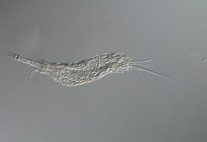Abstract
Cateria gerlachi is redescribed based on specimens from the west coast of Sri Lanka by light microscopical observations of 57 adult and 47 juvenile specimens and by SEM investigations of 33 adult and 10 juvenile specimens. Cateria styx from Brazil is redescribed from 33 adult and 5 juvenile specimens mounted for light microscopy (original material). The original material of C. gerlachi from India and new material of C. styx from Chile have been studied for comparison. Cateria gerlachi can be distinguished from C. styx by leaf-like cuticular hairs dorsally but not laterally on the tergal plate of segment 1 and on the midsternal plate of segments 1–2 vs scales with a posterior process on the entire tergal plate of segment 1 and on the midsternal plate of segments 1–2 in C. styx, fewer lines of leaf-like hairs of the secondary fringe on segments 2–10 in C. gerlachi, broader scales in the central part of the segments in C. gerlachi, the blunt tube on segment 5 in a lateral accessory vs a lateroventral position in C. styx, the lack of a midlateral spine on segment 11 vs its existence on segment 11 of C. styx, the lack of a protrusible dorsal organ at the border of segments 5 and 6 vs its existence in C. styx and type-5 sensory spots and gland cell outlets present on different segments and positions in the two species. We report and document for species of Cateria detailed morphological data, including variability within populations, a female and a male life-history stage, as well as moulting of an adult stage to another adult stage. In contrast to previous records, C. gerlachi occurs in sandy intertidal habitats not only deeply buried in the sediment but also at the surface.

